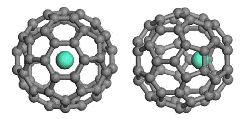Chemistry, Department of: Faculty Series

Xiao Cheng Zeng Publications
Document Type
Article
Date of this Version
6-1-2006
Abstract
Silicon is an important semiconductor for manufacturing of microelectronic chips used in computers and other electronic devices. During the manufacturing process, liquid silicon is being solidified to make high-grade solid semiconductors. Thus, improved data of the solid-liquid interfacial properties of silicon will be useful towards optimizing the experiment condition for making better quality electronics. Yet it is difficult to perform experiments of liquid silicon due to its high melting point. Thus far, most experimental measurements of the solid-liquid interfacial tension are based on the measurement of rate of homogeneous crystal nucleation at a given undercooling. The first measurement of solidliquid interfacial tension of silicon was performed by Stiffler et al. Following pulsed-laser melting thin films of silicon, a deep undercooling of 505 K was achieved. The measured rate of nucleation is about 1029 events/ s m3, which yields a solid-liquid interfacial tension γs1=0.34±0.02 J /m2. The estimation of surface tension is based on the assumptions that the critical nucleus is spherical and the nucleation is homogeneous.


Comments
Published by American Institute of Physics. J. Chem. Physics 124, 236103 2006. ©2006 American Institute of Physics. Permission to use. http://jcp.aip.org/.